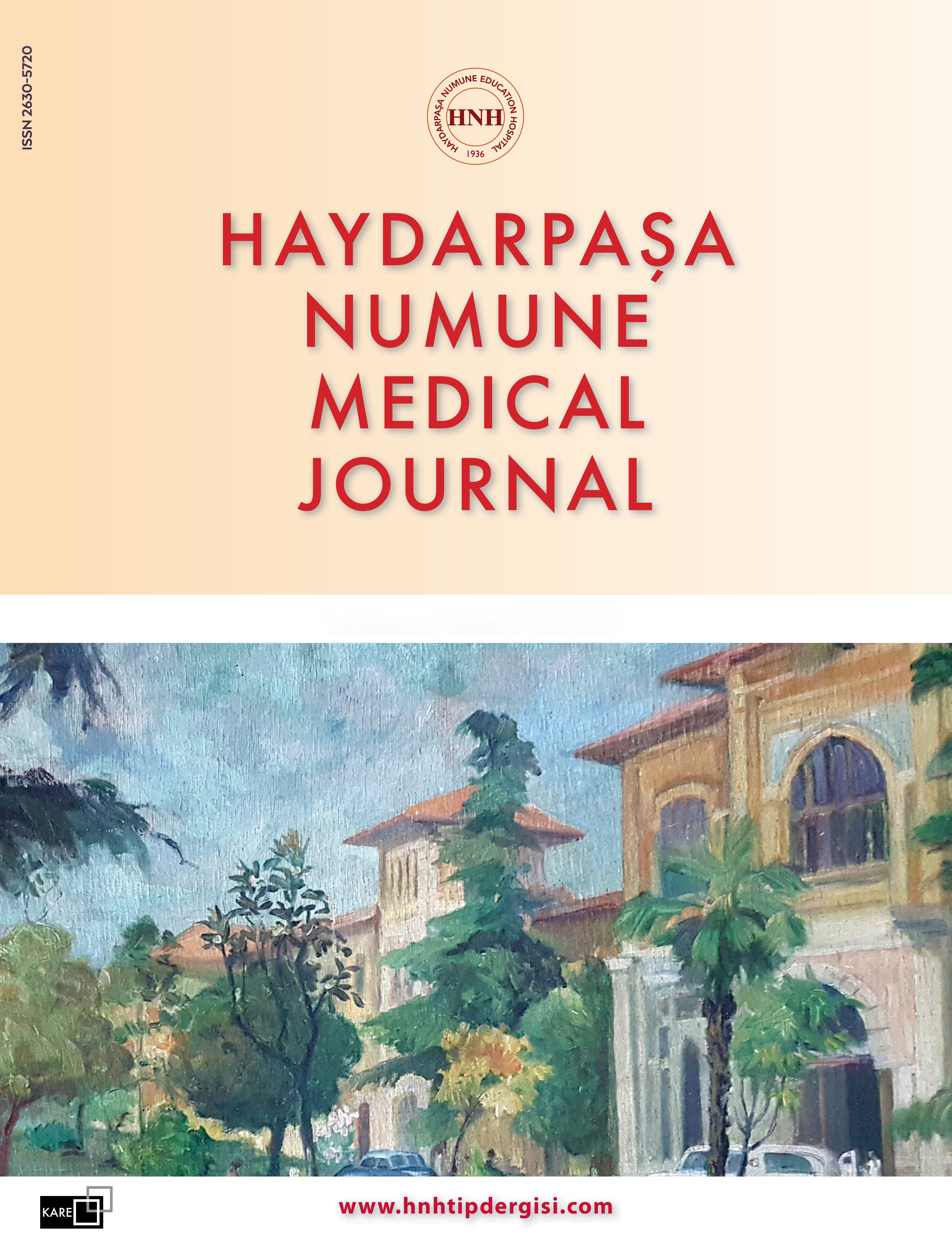Evaluation of the Frequency of Gastroesophageal Reflux Disease in Hemodialysis Patients
Sultan Özkurt1, Yasemin Sağlan2, Handan Gölgeli3, Ramazan Sağlan4, Hüseyin Balcıoğlu5, Uğur Bilge5, İlhami Ünlüoğlu51Department of Nephrology, Eskişehir Osmangazi University Faculty of Medicine, Eskişehir, Turkey2Odunpazarı Community Health Center, Eskişehir, Turkey
3Private RTS Yaşam Dialysis Center, Eskişehir, Turkey
4Department of Public Health, Eskişehir Osmangazi University Faculty of Medicine, Eskişehir, Turkey
5Department of Family Medicine, Eskişehir Osmangazi University Faculty of Medicine, Eskişehir, Turkey
INTRODUCTION: Upper gastrointestinal system complaints are common in hemodialysis patients, yet the prevalence of gastroesophageal reflux disease (GERD) has not been investigated in dialysis patients in this country. The aim of this study was to investigate the frequency of GERD in hemodialysis patients and related factors.
METHODS: This cross-sectional study included 107 patients who underwent standard hemodialysis treatment. Face-to-face interviews were conducted to obtain details of gastrointestinal complaints, biographical data, and the drugs they used were obtained by. The questionnaire used included questions about socio-demographic characteristics and some factors thought to be related to GERD. The National Institutes of Health Patient-Reported Outcomes Measurement Information System GERD Scale was used to evaluate the presence of GERD in the patients.
RESULTS: Of the patients included in the study, 59 (55.1%) were male and 48 (44.9%) were female. The age of the patients ranged from 30 to 89 years, with a mean age of 61.3±12.2 years. The incidence of GERD was 14.0% in the study patients. In all, 72.9% of the patients were using a gastroprotective agent. There was no difference between patients with GERD and those without GERD in terms of age, sex, body mass index, smoking status, marital status, gastroprotective drug use, nonsteroidal anti-inflammatory drug use, or duration of dialysis. As the level of education increased, the frequency of GERD decreased.
DISCUSSION AND CONCLUSION: The frequency of GERD was lower in hemodialysis patients (14%) compared with the general Turkish population (33.9%). High gastroprotective drug use rates in hemodialysis patients may be associated with a lower GERD frequency.
Keywords: Gastroesophageal reflux disease, gastroprotective agent, hemodialysis.
Hemodiyaliz Hastalarında Gastroözefageal Reflü Hastalığı Sıklığının Değerlendirilmesi
Sultan Özkurt1, Yasemin Sağlan2, Handan Gölgeli3, Ramazan Sağlan4, Hüseyin Balcıoğlu5, Uğur Bilge5, İlhami Ünlüoğlu51Eskişehir Osmangazi Üniversitesi Tıp Fakültesi, Nefroloji Bilim Dalı, Eskişehir2Odunpazarı Toplum Sağlığı Merkezi, Eskişehir
3Özel RTS Yaşam Diyaliz Merkezi, Eskişehir
4Eskişehir Osmangazi Üniversitesi Tıp Fakültesi, Halk Sağlığı Anabilim Dalı, Eskişehir
5Eskişehir Osmangazi Üniversitesi Tıp Fakültesi, Aile Hekimliği Anabilim Dalı, Eskişehir
GİRİŞ ve AMAÇ: Hemodiyaliz hastalarında üst gastrointestinal sistem yakınmaları sık görülmektedir ve ülkemizde diyaliz hastalarında gastroözefageal reflü hastalığı (GÖRH) prevelansı araştırılmamıştır. Bu çalışmada hemodiyaliz hastalarında GÖRH sıklığını ve ilişkili olduğu faktörleri araştırmayı amaçladık.
YÖNTEM ve GEREÇLER: Kesitsel tipteki bu çalışmaya 107 standart hemodiyaliz tedavisi uygulanan hasta dahil edildi. Hastaların gastrointestinal sistem şikayetleri, özgeçmiş özellikleri ve kullandıkları ilaçlar yüz yüze görüşme yöntemi ile elde edildi. Anket formu, bireylerin sosyodemografik özelliklerini, gastroözefageal reflü hastalığı (GÖRH) ile ilişkili olduğu düşünülen bazı faktörler ile ilgili soruları içermekteydi. Çalışmada gastroözofageal reflü hastalığının değerlendirilmesinde National İnstitutes of Health (NIH) PROMİS GERD Ölçeği kullanılmıştır.
BULGULAR: Çalışmaya dahil edilen hastaların 59u (%55.1) erkek, 48i (%44.9) ise kadındı. Hastaların yaşları 30-89 arasında değişmekte olup, yaş ortalamaları 61.3±12.2 yıl idi. Hastalarda GÖRH sıklığı % 14,0 oranında tesbit edildi. Hastaların %72.9u gastroprotektif ajan kullanmakta idi. GÖRH olanlarla olmayanlar arasında yaş, cins, vücut kitle indeksi, sigara kullanımı, medeni durum, gastroprotektif ilaç kullanımı, nonsteroid antienflamatuar ilaç kullanımı, diyaliz süresi açısından fark bulunmadı. Eğitim düzeyi arttıkça gastroözofageal reflü hastalığı sıklığının azaldığı bulundu (p<0.05).
TARTIŞMA ve SONUÇ: Genel Türk popülasyonu ile karşılaştırıldığında (%33.9), hemodiyaliz hastalarında GÖRH sıklığı daha az (%14) bulunmuştur. Hemodiyaliz hastalarında yüksek gastroprotektif ilaç kullanım oranı daha az GÖRH sıklığı ile ilişkili olabilir.
Anahtar Kelimeler: Gastroözefageal reflü hastalığı, gastroprotektif ajan, hemodiyaliz.
Manuscript Language: Turkish
















